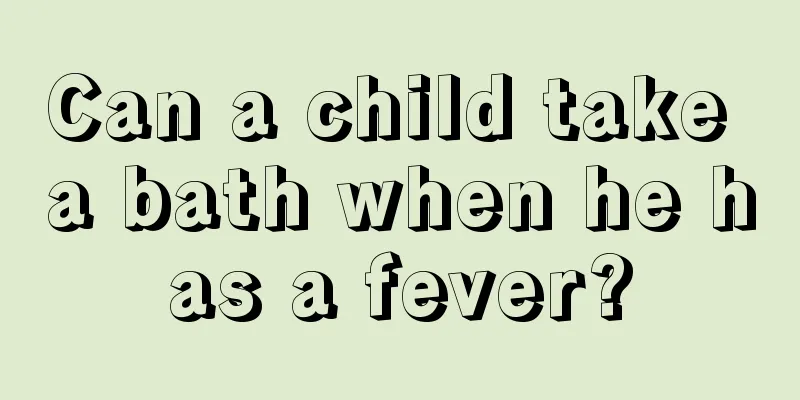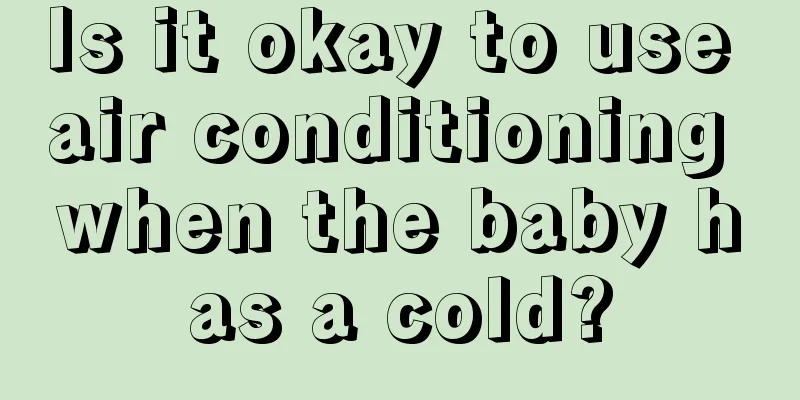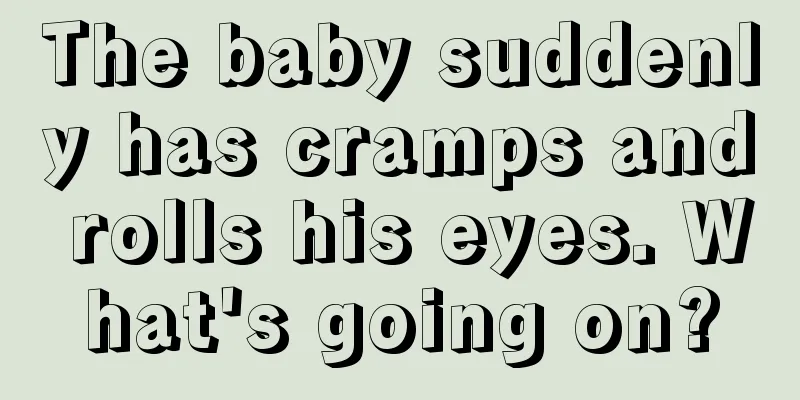Can a child take a bath when he has a fever?

|
Children are weak, and they need to take preventive measures when the flu is prevalent or when the seasons change. They should develop good habits in their daily lives and drink a certain amount of water every day, otherwise they are very likely to catch a cold and have a fever. After a child has a fever, they should be treated early and the temperature should be lowered first, otherwise it will not be good for the child's health. Parents often bathe their children to keep them clean, so can children still bathe when they have a fever? Children can take a bath when they have a fever, and bathing is helpful in reducing the temperature. The premise is that the bathing time should not be too long and the water temperature should not be too high. It can be between 24 degrees and 36 degrees, which is beneficial for reducing the body's temperature. You can also use other methods to achieve the purpose of cooling down. You can use a mixture of alcohol and water to wipe the running parts of large blood vessels, which can also achieve the purpose of cooling down. If the fever is too high, it is not recommended to take a bath at this time, because it may cause the fever to worsen, which is not good. The initial symptoms of a child's fever are red face, hot forehead, cold hands and feet, and poor spirits. In addition, there are symptoms of various systems, such as runny nose, sore throat, and cough in respiratory tract infections, abdominal pain, vomiting, and diarrhea in gastroenteritis, and frequent urination, painful urination, and low back pain in urinary tract infections. The accompanying symptoms of various systems in infants are atypical, and may only include anorexia, vomiting, and diarrhea. There are many diseases that cause fever. Parents should pay attention to the pattern of their children's fever and accompanying symptoms, and go to the hospital for examination in time and receive early treatment. The normal body temperature of the human body is 36-37℃, 37-38℃ is a low fever, 38-39℃ is a moderate fever, above 39℃ is a high fever, and above 40℃ is an extremely high fever. Director Li suggested that young mothers should not panic when they find their children have a fever, but can take some emergency measures at home to relieve the symptoms. Every family should have a thermometer and antipyretics for emergency use. Children with fever should have their temperature measured every 1-2 hours. It is not advisable to use antipyretics when the body temperature of a young child is below 38.5℃; when the body temperature exceeds 38.5℃, physical treatments such as cooling patches or ice compresses can be used to reduce the temperature, or an appropriate amount of pediatric antipyretic tablets can be taken; when the body temperature exceeds 39℃, the child should stay in bed, open the blanket or loosen the clothes to expose the skin, place an ice bag or a cold, wet towel on the head, and go to the hospital for diagnosis and treatment as soon as possible. During a high fever convulsion, the child's eyes will stare or move upwards, he will lose consciousness, will not respond to calls, his lips, face and body will be cyanotic, and his limbs will twitch. Parents should immediately press the child's "Ren Zhong" acupoint (at the midpoint of the nasolabial groove), with strong stimulation continuing for 1-3 minutes until the child cries, and then use the above method to quickly reduce the temperature. At the same time, the child should go to the hospital for diagnosis and treatment immediately. Babies under six months old generally do not receive antipyretic injections or take antipyretic medicine when they have a high fever. The best way to reduce the temperature is a warm water sponge bath. Regardless of whether the fever subsides after emergency treatment, the child should be taken to the hospital for treatment. |
>>: What is the normal head circumference of a 1-year-old baby?
Recommend
Do mothers know the reasons why infants and young children do not sleep well?
Nowadays, many children often show poor sleep qua...
What is the cause of the baby's diarrhea with blood?
When the baby is sick, the mother will feel very ...
Diagnosis of Myasthenia Gravis in Children
Myasthenia gravis in children is an extremely har...
The difference between low blood calcium and calcium deficiency in babies
If the baby has some physical problems in daily l...
What is the use of rubbing the soles of your baby's feet?
For some babies, since some organs have not yet f...
Children's safety knowledge on preventing drowning
There are many drowning incidents among young chi...
How to treat intestinal flatulence in newborns
Many parents have reported that their babies have...
What are the benefits of children learning Go?
The learning process of young children is a proce...
Two-year-old baby's head bleeds after falling
If a two-year-old baby falls and has bleeding on ...
What should I do if my three-month-old baby has a cough and a stuffy nose?
It is normal for adults to cough, for example, if...
What are the methods for children to skip rope
Jumping rope has always been a very healthy way o...
What should I do if my baby has a fever and vomits?
During the feeding process, babies will more or l...
Why does my ten-month-old baby have a blocked nose?
Many mothers do not know what causes their childr...
What should I do if my baby has a fever and no appetite?
When children have a fever, their appetite will b...
Symptoms of roseola infantum
For young children, mothers need to take good car...









